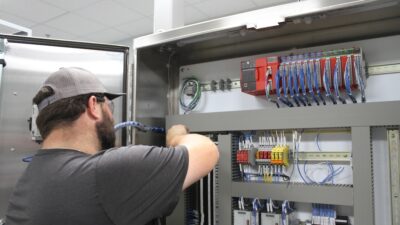Driving down the street you decide to stop to fill your gas tank. Being an eco-conscious driver, you have a flex-fuel vehicle that can burn E-85, a mix that is 85% ethanol and only 15% gasoline. While you fill your tank, you realize that the building next to the pumps isn't a normal gas station. It's actually an automated bioethanol plant, and the fuel you're pumping is made from local waste fe...
Driving down the street you decide to stop to fill your gas tank. Being an eco-conscious driver, you have a flex-fuel vehicle that can burn E-85, a mix that is 85% ethanol and only 15% gasoline. While you fill your tank, you realize that the building next to the pumps isn’t a normal gas station. It’s actually an automated bioethanol plant, and the fuel you’re pumping is made from local waste feedstock.
This kind of scenario is already happening in Finland, thanks to St1 Biofuels Oy. The company now has four such plants around the country in Lappeenranta, Närpiö, Hamina, and Vantaa, and plans to have 15 locations by 2014.
While fuel ethanol manufacture in the U.S. centers on large regional production sites, St1 has built its business model around the idea of building small, highly-automated plants that can be controlled from a central location. The company looks for sites where suitable feedstocks are available, avoiding the need for extensive transportation costs of raw or finished product. If a plant can also capture waste heat from a neighbor, that is an additional benefit.
The range of products that qualify as feedstocks is more extensive than you might think, and most would probably be regarded as garbage. Lappeenranta consumes 5,000 tons of bakery and candy factory waste to manufacture 1.5 million liters (396,000 gallons) of ethanol annually. The Närpiö facility is co-located with a potato processor and makes 1.5 million liters from that plant’s waste stream. None of the plants consume usable food products.
| The Narpio facility is located on the site of a potato processor. |
The process of fermentation and distillation is straightforward, and St1 contends that large scale does not always bring production economies. Its experience is that smaller plants are easier to build close to customers, requiring less equipment and less energy input per liter of product. Locating plants close to the raw materials and consumers has a double benefit in that there are minimal transport costs involved on both ends. This helps maintain the highest possible energy content of the finished product, in that the least outside energy has been consumed in any area of production. Even the distillation process consumes only renewable fuels.
Each plant is controlled by an ABB 800xA DCS, communicating with a central control location via a virtual private network (VPN). Given the relatively small scale of the units, they each have around 500 I/O points. Electrical equipment, including pumps and drives, are connected with a Profibus DP network. Technicians visit the plants when necessary, but for normal operation, they are unmanned.
This type of creative thinking helped St1 win an innovation award from Finland’s Chemical Industry Foundation in 2008. During these capital and resource constrained times, such innovation will be critical to solving many problems.
| Author Information |
| Seppo Hakonen, ABB Finland, contributed to this story. Peter Welander is process industries editor. Reach him at [email protected] . |


